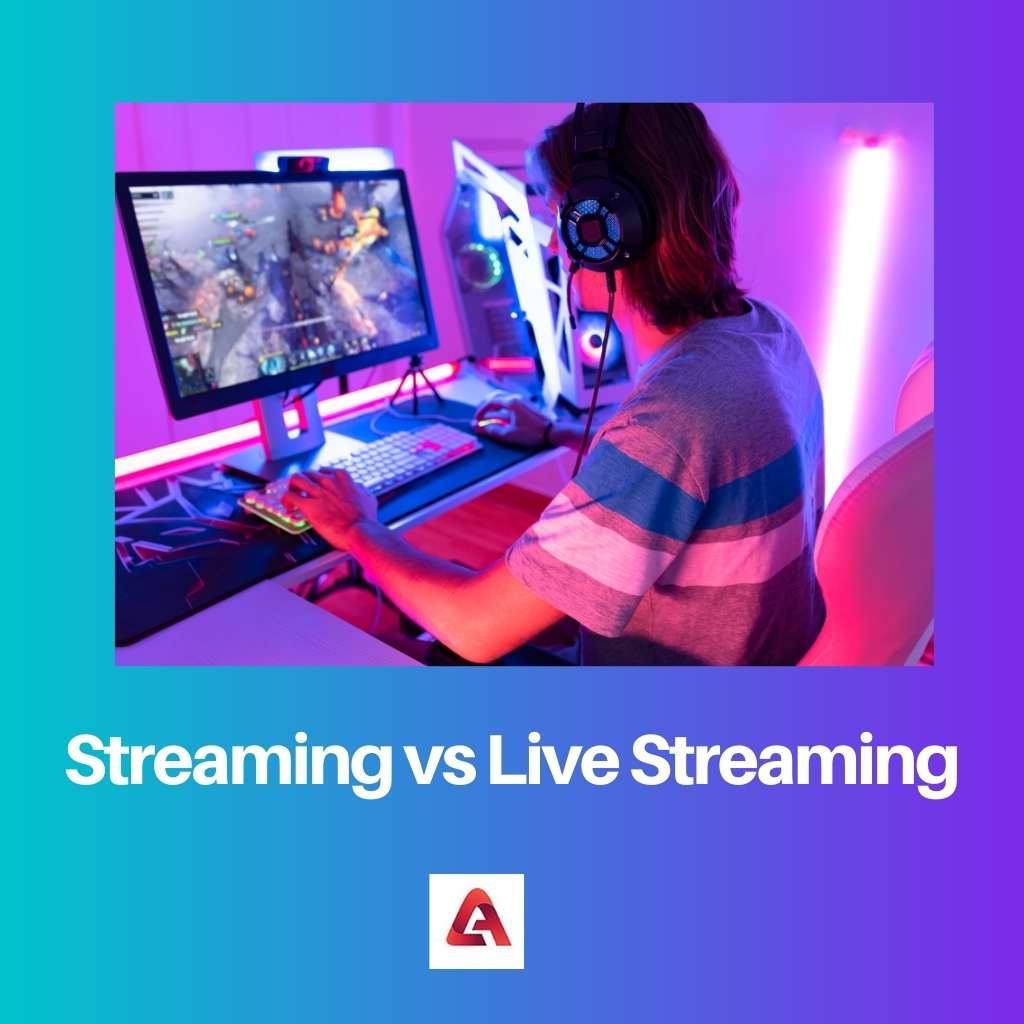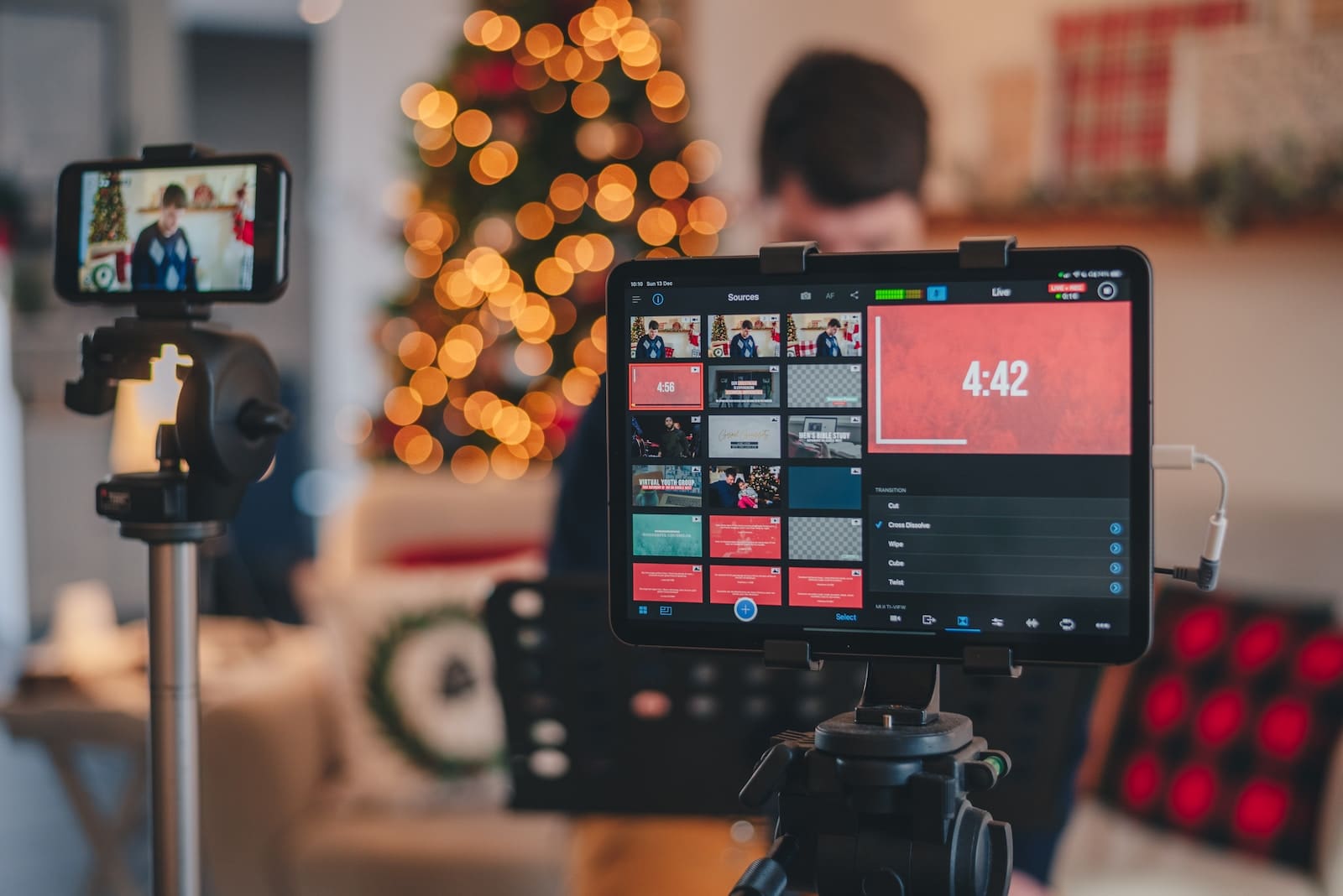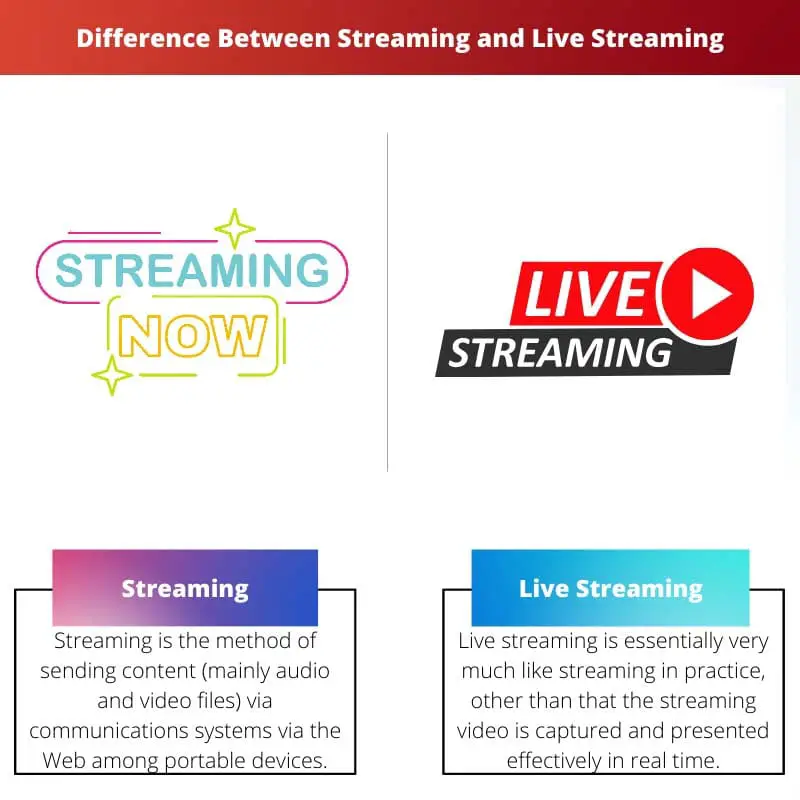Streaming has revolutionized the Internet in the current digital era, just like cinema as well as radio were previously displaced by television as the dominant medium of public information and entertainment.
Streaming has revolutionized the Internet in the current digital era. Like cinema, including radio was previously displaced by television as the dominant general information and entertainment medium.
Key Takeaways
- Streaming involves the real-time transmission of audio or video content over the internet, while live streaming specifically refers to broadcasting events as they happen.
- Streamed content can be pre-recorded or live, allowing for on-demand viewing, whereas live streaming only provides content access during the event.
- Live streaming includes real-time interaction between the broadcaster and viewers, while streaming pre-recorded content does not offer such engagement.
Streaming vs Live Streaming
The difference between Streaming and Live Streaming is that Streaming transfers data (mainly audio and video files) via communications networks through the Online platform among mobile platforms. In contrast, live Streaming is essentially just like streaming in principle, except that the streaming video is filmed and presented effectively in real-time without any substantial delay.

Media that is provided and processed in real-time from a provider, with little or no intermediary storing in networking devices, is known as streaming content. Streaming relates to how content is delivered instead of the material itself.
Live Streaming is precisely what it sounds like: it broadcasts the content to users on a real-time basis when it is being made.
There is very little lag time during taping as well as watching with live Streaming. Live-streamed footage is lightly edited because it flows directly out from the camera you’re attempting to film towards the audience.
Comparison Table
| Parameters of Comparison | Streaming | Live Streaming |
|---|---|---|
| Meaning | Streaming is the method of sending content (mainly audio and video files) via communications systems via the Web among portable devices. | In contrast, live streaming is essentially very much like streaming in practice, other than that the streaming video is captured and presented effectively in real time without any substantial delay. |
| Technology | Nowadays, video on demand is indeed the core concern of media streaming companies, which entails providing multimedia files from just a network to a user’s client application in response to a customer’s query. | Whereas, in the case of Live Streaming, the host creates a live video stream and interacts with the audience in real time. However, the standard caching methods that are used in conventional streams cannot be used. |
| Examples | Few of the examples of normal Streaming are YouTube, Spotify, Voot, etc. | YouTube Live, Hitbox, and many more are examples of Live Streaming. |
| One to one contact | Since, the multimedia files are pre-recorded and then streamed, the viewers can’t interact with the host in real-time. | In Live Streaming, most of the times, users are given the option to interact with the host. |
| Which is better | Streaming at a low resolution is a good option for those with weak internet connection. | On the other hand, Live Streaming is better for those who have a constant and high-end internet connection. |
What is Streaming?
Streaming is sending content (mainly interactive multimedia files) between mobile devices across communications systems via the Internet.
It’s a way of displaying media content that can be analyzed in a constant, continuous stream. Streaming multimedia is provided by a supplier in real-time and consumed by consumers.
Rather than the material itself, the word “stream” means the process of distributing and obtaining it. The methods of conveying and consuming media have been radically transformed by streaming content.
Streaming media services like Spotify, Dailymotion, Itunes, Amazon Prime, iTunes, Sling tv, Voot, Vimeo, and others are used by the vast majority of us regularly.
Streaming media is also at the heart of internet technology, which permeates our lives. File downloads, wherein the end-user downloads the whole file for such information without watching or listening to that too, is a streaming option.
A consumer can use their music player to start playing video clips or digital audio information first before the complete file has been transferred using Streaming.

What is Live Streaming?
Live Streaming is similar to regular Streaming, except that the content on the Web is delivered seen by the final user in real-time. In this context, the word ‘live’ refers to streaming media
that is concurrently captured and transmitted in real-time, with no lag.
Live Streaming is similar to Streaming in that it allows information to be transmitted as an actual digital signal over the Web.
Live Streaming is a convenient and straightforward approach to achieving a live studio audience like podcasting or webinars. On the other hand, a webcast can be broadcast live and on request.
Encrypted streaming media files, for instance, are designed for a particular distribution and fair play over the Web.
Except for living broadcasting, Live Streaming operates on a one-to-one premise, with distinct signals being sent to new receivers simultaneously.
Given how many people are watching the live broadcast simultaneously, the stream’s person gives out distinct signals to portable platforms.

Main Differences Between Streaming and Live Streaming
- Streaming is a means of distributing content (audio and video files) over the Internet to mobile devices via communications networks. Live streaming, from the other end, is practically the same as streaming in theory, except that the streaming video is collected and shown on a real-time basis, all with no significant delay.
- Video on demand, which comprises supplying multimedia content from merely a networking to a user’s application server in reply to a user’s query, has become the primary issue of media streaming firms. In Live Streaming, the host provides a real-time video broadcast and engages with the public. The normal caching mechanisms employed in traditional streams, on the other hand, are not applicable.
- YouTube, Spotify, Voot, and other streaming services are instances of standard streaming. Live Streaming is exemplified by YouTube Live, Hitbox, and a slew of other platforms.
- The viewers cannot connect with the presenters in real-time because the multimedia materials are pre-recorded and subsequently streamed. Users are given the opportunity to communicate with the host during live streaming.
- If a person has a slow internet connection, streaming at a low resolution is a feasible alternative. Live Streaming, from the other end, is ideal for individuals with a reliable and high-speed internet connection.




